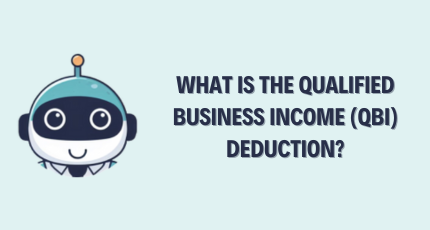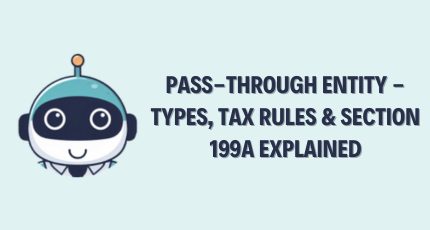Bonus Depreciation – Rules, Elections & State Conformity [2025 Guide]
![Bonus Depreciation – Rules, Elections & State Conformity [2025 Guide]](https://www.cpapilot.com/blog/wp-content/uploads/2025/10/Bonus-Depreciation.png)
Bonus depreciation allows businesses to deduct up to 100% of the cost of qualified property in the year it is placed in service. Under the One Big Beautiful Bill Act (OBBBA), 100% bonus depreciation applies only if both the acquisition date (binding contract date) and the placed-in-service date are after January 19, 2025. Otherwise, lower phase-out rates apply.
TL;DR – Bonus depreciation
- What it is: Immediate deduction for qualified MACRS property with ≤20‑year life; can create net operating loss (NOL).
- Why it matters: Accelerates deductions, impacts cash taxes; interacts with Section 179 and state rules.
- Who benefits: Businesses placing qualifying property in service in the tax year.
- Key actions: Verify eligibility → model % vs Section 179 → consider state conformity → file/elect on Form 4562.
Table of Contents
- What is Bonus Depreciation and How Does It Work?
- What is the Current Bonus Depreciation Percentage and Phase-Out Schedule for 2025?
- Which Assets Qualify for Bonus Depreciation Under OBBBA?
- What is the Difference Between Section 179 and Bonus Depreciation?
- How to Calculate Bonus Depreciation for Qualified Property?
- How to Claim or Elect Out of Bonus Depreciation (Form 4562)
- What are the Bonus Depreciation Recapture Rules?
- How Does State Conformity Affect Bonus Depreciation?
- What are Advanced Planning Strategies for Bonus Depreciation (2025 and Beyond)?
- What are Common Mistakes and IRS Audit Triggers Related to Bonus Depreciation?
- How CPA Pilot Automates Bonus Depreciation and Section 179 Workflows?
- FAQs About Bonus Depreciation (2025 Edition)
- Final Tip: Bonus Depreciation Mastery for Tax Professionals
What is Bonus Depreciation and How Does It Work?
Bonus depreciation—also known as additional first-year depreciation—allows taxpayers to accelerate cost recovery for qualified assets under the Modified Accelerated Cost Recovery System (MACRS).
Businesses can claim a substantial deduction in the year the property is placed in service, rather than spreading depreciation over time.
This provision was expanded by the TCJA (2017–2022) and made permanent for property acquired and placed in service after January 19, 2025, by the OBBBA (enacted July 2025).
CPA Considerations:
- Applies automatically unless a taxpayer elects out for an entire class of property.
- Can be combined strategically with Section 179 expensing.
- Requires accurate placed-in-service documentation and careful asset-class tracking.
See How CPA Pilot Handles Compliance: Want to see how AI can automate eligibility checks and asset tracking for you? Book a Free Demo Now
What is the Current Bonus Depreciation Percentage and Phase-Out Schedule for 2025?
40% applies to property acquired (binding contract) before Jan 19, 2025—even if placed in service after.
100% applies only to assets acquired and placed in service after Jan 19, 2025.
| Tax Year | Bonus % | Governing Law | Eligibility Notes |
|---|---|---|---|
| 2018–2022 | 100% | TCJA | Full expensing for new & used property |
| 2023 | 80% | TCJA phase-down | Applies to post-Sept 27, 2017 assets |
| 2024 | 60% | TCJA phase-down | Ends Jan 19, 2025 |
| Jan 1–Jan 19, 2025 | 40% | Transitional | Applies if property was acquired by binding contract before Jan 19, 2025—even if placed in service after |
| After Jan 19, 2025 | 100% | OBBBA permanent | Only for assets acquired and placed in service after Jan 19, 2025 |
Key Rule and CPA Tips:
- Key Rule: The acquisition date means the binding contract date. If property is acquired under a contract dated before Jan 19, 2025, phase-down rates apply—even if placed in service after this date.
- To qualify for 100%, both the binding contract/acquisition and the placed-in-service dates must be after Jan 19, 2025.
- CPA Tips:
- Verify the binding contract date for fixed asset purchases.
- Use OBBBA’s 100% bonus only when both dates fall after Jan 19, 2025.
- Check state conformity each year before applying federal rates.
Which Assets Qualify for Bonus Depreciation Under OBBBA?
Qualified assets include tangible property with a MACRS life of 20 years or less, off-the-shelf software, vehicles, qualified improvement property (QIP), water utility property, and certain film, TV, or sound-recording productions.
Used property is eligible if it has not previously been used by the taxpayer and was acquired in an unrelated transaction.
Eligible Property
- Machinery, manufacturing equipment, office furniture, and tools
- Off-the-shelf software (purchased, not developed in-house)
- Vehicles under listed-property rules
- Qualified Improvement Property (QIP): interior non-structural improvements to commercial buildings
- Water utility assets and certain entertainment productions
Used-Property Tests
- Not previously used by the taxpayer.
- Not acquired from a related party.
- Must meet placed-in-service requirements.
Tired of manual eligibility reviews? CPA Pilot flags qualified and ineligible property—automatically. Try CPA Pilot Now
What is the Difference Between Section 179 and Bonus Depreciation?
The main difference between Section 179 and bonus depreciation is that Section 179 has an annual deduction limit and is restricted by taxable income, while bonus depreciation has no limit, applies automatically, and can create a net operating loss for businesses.
| Factor | Section 179 | Bonus Depreciation |
|---|---|---|
| Limit (2025) | $1,250,000 | None |
| Phase-out threshold | $3,130,000 | None |
| Income limit | Yes | No |
| Election | Asset-by-asset | By class (automatic) |
| State conformity | Broad | Varies |
| Creates NOL | No | Yes |
CPA Tip: Most CPAs use Section 179 first for state-conforming assets, then Bonus for federal-only if state decouples.
How to Calculate Bonus Depreciation for Qualified Property?
Multiply the asset’s qualified cost by the applicable bonus percentage. If less than 100%, the remaining basis depreciates under MACRS.
Formula: Bonus Depreciation = Qualified Cost × Applicable Bonus Rate
Examples
- $300,000 asset × 100% = $300,000 deduction (2025)
- $500,000 asset × 40% = $200,000 bonus + $300,000 MACRS basis (early 2025)
Reminder: Eligibility is determined by BOTH binding acquisition date AND placed-in-service date.
How to Claim or Elect Out of Bonus Depreciation (Form 4562)
Report bonus depreciation on IRS Form 4562, Part II. To opt out, attach a statement identifying the property class and year. The election is irrevocable.
Steps for claiming or opting out.
- Complete Form 4562 Part II for each qualified asset.
- Enter cost and percentage on line 14.
- Attach opt-out statement if excluding a class.
- Maintain records of basis, dates, and contracts.
Why handle elections and schedules by hand? CPA Pilot auto-generates IRS-ready forms—instantly. Sign Up Now
What are the Bonus Depreciation Recapture Rules?
If bonus-depreciated property is sold or converted to personal use, the excess deduction is recaptured as ordinary income under §1245 and reported on Form 4797.
Triggers
- Sale or exchange before recovery period ends
- Business use drops below 50%
- Conversion to personal or investment use
Tax Treatment: Recapture is ordinary income under IRC §1245 and reported on Form 4797.
How Does State Conformity Affect Bonus Depreciation?
State rules change frequently; always check the latest state instructions.
| State Type | Examples | Treatment |
|---|---|---|
| Full Conformity | TX, FL, CO | Adopt federal 100% |
| Partial Conformity | LA, KS | Follow TCJA phase-out |
| Non-Conformity | CA, NY, NJ, PA, IL | Add-back required |
Best Practice: Maintain parallel state/federal schedules and update annually as legislatures change rules.
CPA Pilot flags decoupling states for you—never miss an add-back again. Try CPA Pilot Now
What are Advanced Planning Strategies for Bonus Depreciation (2025 and Beyond)?
Optimize cash flow by pairing bonus depreciation with Section 179, timing placed-in-service dates, electing out by class, and modeling state impact to avoid add-backs.
Tactics
- Combine §179 and bonus for blended expensing.
- Time installations to qualify for higher rates.
- Elect out to manage NOLs and credit carryforwards.
- Prioritize QIP and heavy vehicles.
- Recheck state rules before filing.
What are Common Mistakes and IRS Audit Triggers Related to Bonus Depreciation?
Frequent errors include misclassifying assets, incorrect placed-in-service dates, overstating vehicle use, and missing state add-backs. These often trigger IRS audits.
Checklist
- Verify binding-contract and service dates.
- Maintain business-use logs for listed property.
- Attach election statements.
- Reconcile federal vs state basis differences.
- Keep audit trail with invoices and asset ledgers.
How CPA Pilot Automates Bonus Depreciation and Section 179 Workflows?
CPA Pilot automates bonus depreciation by classifying assets, applying correct percentages, flagging state decoupling, and generating Form 4562 outputs and client summaries.
Platform Capabilities
- AI-based asset eligibility detection
- Section 179 vs. bonus comparison modeling
- Automated Form 4562 and election generation
- State conformity tracking and alerts
- Audit-ready documentation packages
Ready to Take Control of Your Tax Workflow? Boost compliance and reduce prep hours—see it work for you! Book a CPA Pilot Demo
FAQs About Bonus Depreciation (2025 Edition)
How does bonus depreciation impact real estate cost segregation?
Bonus depreciation enables property owners to accelerate deductions for components reclassified via cost segregation, maximizing upfront tax benefits for qualifying assets.
What vehicle types qualify for uncapped bonus depreciation?
Passenger autos remain subject to first-year limits. Heavy vehicles over 6,000 lbs (GVWR) can qualify for uncapped bonus depreciation if used more than 50% for business. Maintain business-use records for audit purposes.
Can bonus depreciation be paired with Section 179 and R&D expense rules?
Taxpayers apply Section 179 first, then bonus depreciation to remaining basis; Section 174 R&D expenses now require amortization, not immediate expensing, under new rule.
How does bonus depreciation affect Texas Franchise/Margin Tax calculations?
Texas conforms to federal bonus depreciation rules; qualifying asset deductions reduce both federal and state franchise/margin tax liability for eligible businesses.
What are key audit risks tied to bonus depreciation elections?
Claiming bonus depreciation on ineligible property, ignoring asset use thresholds, or failing to substantiate acquisition/service dates can trigger IRS audit scrutiny.
How does bonus depreciation affect the Qualified Business Income (QBI) deduction?
Bonus depreciation can reduce the QBI deduction by lowering taxable business income. Since the QBI deduction is based on qualified business income after deductions, large bonus depreciation claims may decrease or eliminate the available 20% QBI deduction for pass-through entities.
Can I claim both bonus depreciation and the SALT deduction on the same return?
Yes, you can claim both, but the SALT deduction (capped at $10,000 for individuals) applies to itemized personal taxes, while bonus depreciation applies to business property. They affect different sections of the return but can interact by influencing overall taxable income and phaseouts.
Final Tip: Bonus Depreciation Mastery for Tax Professionals
The OBBBA restores permanent 100% bonus depreciation—but only for property acquired and placed in service after January 19, 2025. CPAs must review contract dates, verify asset eligibility, and track state decoupling to protect clients from compliance errors.
CPA Pilot simplifies these steps by automating classification, calculations, elections, and client communication. Use it to streamline bonus depreciation management and build data-driven tax advisory workflows.
👉 Explore CPA Pilot – AI Tax Assistant for Tax Firms to see how AI automation cuts hours from each return and eliminates manual depreciation tracking.





